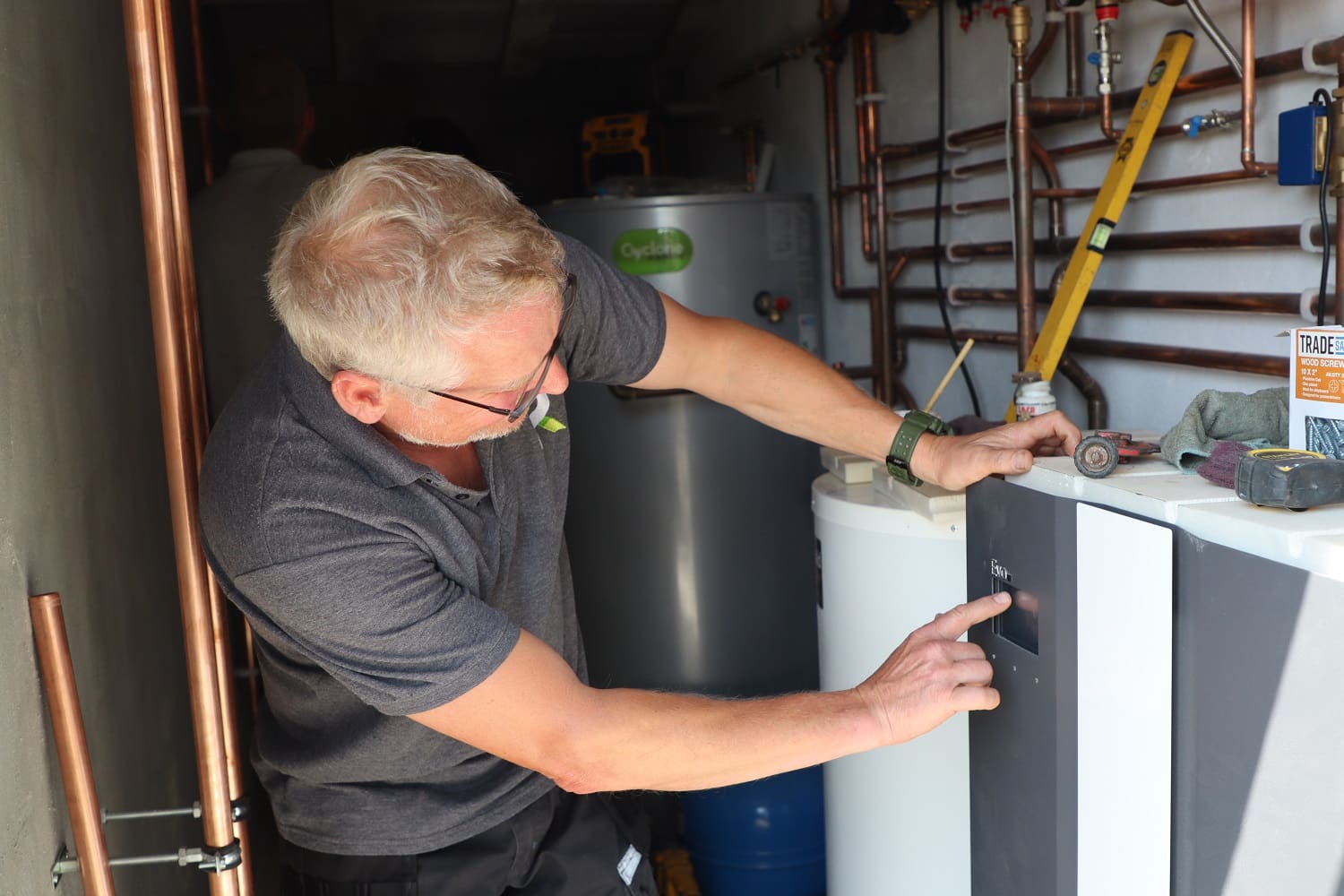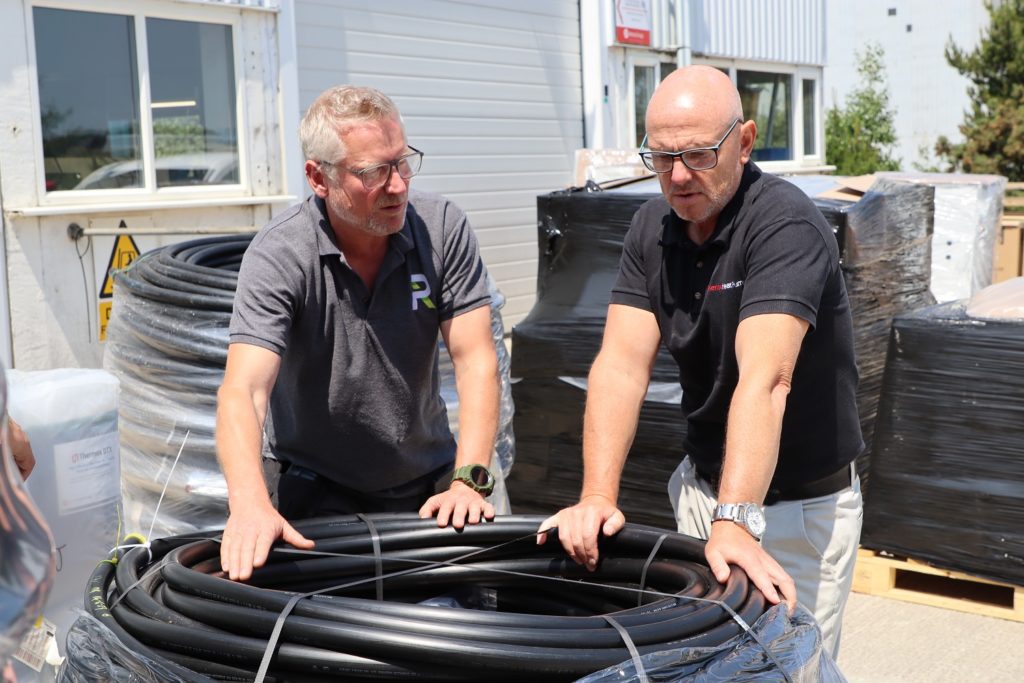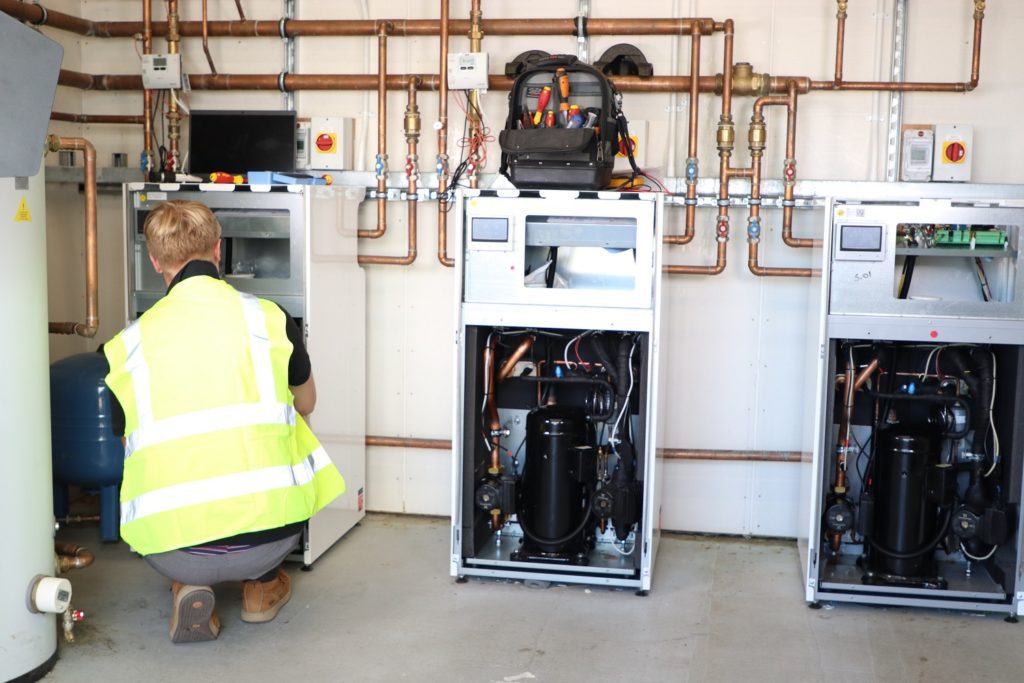A guide to transitioning from traditional heating solutions to ground source heat pumps.
A guide to transitioning from traditional heating solutions to ground source heat pumps.

The way the UK heats its homes has to change. The government has made it clear that the future of home heating is low-carbon energy-efficient heat pumps.
With an impending ban on gas boilers in new builds by 2025 and the government committed to increasing annual heat pump installations tenfold by 2028, many individuals involved in traditional energy installations are looking to expand into renewables to futureproof.
While solar panels and air source heat pumps tend to dominate the conversation around renewables there is another solution that delivers high energy efficiency, longer lifespans and lower lifetime ownership costs compared to many other heating systems.

With such compelling reasons to turn the spotlight on ground source heat pumps (GSHPs), Darren Veal, training manager at Kensa Heat Pumps, the UK’s leading manufacturer in the sector, takes a closer look at the technology and explains the simplicity of transitioning to installing GSHPs with this guide to ‘Getting started with ground source heat pumps’.
To meet the ambitious target of 600,000 heat pump installations per year by 2028, thousands of skilled installers will be required to help the sector undergo its rapid growth.
There is a commercial opportunity here for savvy installers – everyone has a role to play in the transition to a low-carbon future. Now is the time to start upskilling in renewable heating technology to get ahead of the curve and future-proof your business.
The technology offers an opportunity to boost the British economy and create thousands of green jobs. Analysis by the Heat Pump Association suggests that at least 50,200 installers will be needed by 2030, based on the deployment of 1 million heat pumps. If a sizeable proportion of these heat pumps were manufactured in the UK, it is estimated that a further 15,000 (high-paid) jobs would be created. If a fair amount of these heat pumps were GSHPs rather than ASHPs, up to 25,000 additional jobs would be created in infrastructure provision.
As the UK’s only manufacturer of GSHPs, Kensa recognises that installers are integral in the transition to low-carbon heating. Products and installation methodologies have been designed with this in mind and the manufacturer has worked to make the installation and the human interfaces as similar to boilers as possible.
Completely free to installers, Kensa offers training through their progressive and tailored Installer Training Pathway that is open to all plumbing and heating engineers looking to learn more about GSHPs. To further support those upskilling into this technology Kensa has also recently launched a dedicated Partner Network with a free support package that delivers valuable member-only benefits.
The targeted Ground Level Training course is ideal for plumbing and heating engineers wanting to learn to install ground source heat pumps or looking for a refresh and offers a route into the renewable heating industry. After completing this short training course, engineers can use Kensa’s MCS Umbrella Scheme to deliver supported installations. For a fee, Kensa will manage the elements of ground source projects that those without a background in the technology will be less familiar with, such as sizing, specification, groundworks and commissioning, to ensure installations are fully compliant.
For some GSHPs are an unfamiliar technology so let’s take a closer look at what makes them such a useful solution. As is well understood, heat naturally flows from warmer to cooler places. An electrically-powered GSHP uses this physics to extract heat stored in the ground that is naturally replenished through sunlight and rainfall. The temperature of the ground near the surface remains between 10 and 12 degrees all year round.
Typically, a GSHP circulates a cold antifreeze fluid through a closed-loop ground array formed of high-density polyethylene (HDPE) pipe, either buried in shallow trenches or inserted into vertically drilled boreholes. The fluid absorbs the surrounding heat energy as it passes through the pipe and delivers this to the heat pump via a heat exchanger.
The GSHP then compresses and condenses this low-grade energy to a higher temperature for use in the property’s heating and hot water system. Having transferred the absorbed energy, the cooled fluid continues its circuit back into the submerged pipework to repeat the cycle.
Using a freely available heat source, a GSHP achieves higher efficiencies than any other heating system, delivering 3 to 4 kilowatts (kW) of heat for every 1 kW of electricity it consumes. The more that renewable sources, such as solar and wind power, contribute to the electrical grid, the small portion of non-renewables derived electricity used by a GSHP will become less carbon-intensive in years to come.
Although both ground source and air source heat pumps (ASHPs) are renewable alternatives to fossil fuels, they differ in efficiency, running costs, carbon savings and durability.
In principle, they are similar appliances, with similar components, that upgrade naturally occurring heat energy and transfer it to a building’s heating distribution system.
An ASHP is situated outside the property and has a fan to move the external air across an evaporator to extract the heat energy. ASHPs may require planning permission, due to such things as noise output, visual impact and proximity to boundaries and, for the same reasons, they are not recommended for high-density housing.
The biggest difference is that GSHPs require ‘ground arrays’ – the slinky trenches and boreholes needed to extract the heat energy stored underground. Ground temperatures remain stable all year round, whereas the air temperature fluctuates and is often much cooler in winter. This stable heat source is what gives GSHPs the highest efficiency of any renewable technology.
The ground array is the element most likely to be unfamiliar to those currently fitting traditional fossil fuel technologies. However, experienced subcontractors are usually employed to complete the external groundwork; this is separate from the GSHP which is installed inside the home.
Installing a GSHP unit is not much different from installing a boiler. Designed to be easy to install, the majority of Kensa’s GSHPs are on the Energy Networks Association (ENA) heat pump database meaning that they are Connect & Notify approved and they are also backed up with an excellent level of technical support and services.
No louder than a dishwasher, a GSHP generally doesn’t require planning permission. The unit is situated in a kitchen cupboard, utility room or plant room resulting in a 20-year lifespan with minimal maintenance requirements, contrasting with ASHPs that are usually exposed to the elements, and require regular servicing and need replacing every 10-15 years.

For both variants, customers in England can get government grants via the Boiler Upgrade Scheme (BUS) to help with the cost of installation with GSHPs currently attracting a higher grant of £6,000 compared to £5,000 for an ASHP. Domestic purchases of heat pump units are also currently eligible for 0% VAT.
With the right design, GSHPs can be installed in any building from new to old and urban to rural. Through their superior efficiency, GSHPs can deliver running cost savings to a wide range of buildings from every era.
A common misconception is that they are not suited to properties that don’t have space for a ground array. Slinky trenches do need sufficient exposed land area, but boreholes are a space-saving alternative. Water, which is an excellent conductor of heat, can also be used as a heat source. The GSHP unit remains the same, but the ground array pipework is submerged in lakes, ponds, rivers or aquifers. Depending on the depth of the water and the flow rate, this can result in extremely energy-efficient systems.
Calculations may show that the available heat source isn’t quite sufficient for the required heat load in some cases. One solution is to improve the building’s insulation to reduce the heat load so that the available garden area may well become viable. By doing this it may even be possible to specify a smaller heat pump, offsetting the insulation costs.
While it is a myth that GSHPs are only suitable for highly insulated buildings, it is a fact that the more thermally efficient a property is, the more effectively it will retain the heat generated by any type of heating system.
Modern condensing gas boilers can be around 90% efficient, with 10% of heat wasted through the flue to the outside. Not even home improvements would make a huge difference to the system’s efficiency, apart from saving a few kilowatt-hours (kWh) of energy per year. On the other hand, improving the energy efficiency of a property with a GSHP is a double win because of the correlating relationship between flow temperature and efficiency.
With the understanding of a building’s heat requirements and the design principles of a low flow temperature heating system already accrued by heating engineers and installers, working with GSHPs is a surprisingly straightforward transition.
As outlined earlier, GSHPs absorb the natural heat from the ground, move this low-grade energy to the heat pump and upgrade it to a higher temperature using a compressor and a refrigerant process. Kensa GSHPs have been designed with the installer in mind. Access to pipe fittings and electrical connections is made easy with either a 28mm brass push fit on the EVO range or 22mm compression fittings on the Shoebox range. Both connect to a 3-port zone valve to divert the system from hot water to space heating. All the unit needs is a switched live signal from a room thermostat to call for heat.
Most heating engineers are familiar with a “Y plan system” that uses a mid-position 3-port valve and is able to deliver heating and hot water at the same time, but at a higher temperature and poorer efficiency. Ground source heat pumps have the same ‘Y plan’ pipework configuration but the valve is not mid position – it’s either heating or hot water. This is because you get better efficiency delivering lower temperature heating and only raise the temperature for hot water.
GSHPs should be designed to provide 100% of a property’s space heating even on the coldest of days. They will also provide domestic hot water. To maximise the efficiency of a heat pump, it is important to design the heating system on the lowest flow temperature possible. Engineers will need to calculate room-by-room heat losses for the property. While the GSHP itself will most likely be a single unit with a stated kW output, each room in the building is going to have a different heat demand and heat emitters (radiators or underfloor heating) should be individually calculated to meet that heat demand. When using a GSHP instead of a boiler, the rule is always to size the emitter so that it is capable of heating the room using the lowest possible water temperature. The usual practice is to work out which room needs the highest water temperature due to practical limitations and then size all the other emitters to the same temperature.
For example, a room that needs 500W can be heated just as quickly by a larger radiator operating at 50°C as by a small radiator operating at 70°C. The lower the temperature of the heating distribution system, the higher the system’s efficiency – this is called the Coefficient of Performance (CoP). Not all properties will need a completely new radiator system. Existing radiators can still be utilised by moving them around. e.g., move the current living room radiator to the bedroom and install a new larger radiator for the living room. It is also recommended that heating radiators are replaced every 15 to 20 years.
To avoid short cycling of the GSHP when in space heating mode, approximately 25% of the radiators should be used as bypass radiators, i.e., with no thermostatic controls on them. These bypass radiators should be in areas that do not require close temperature control, such as hallways. If close temperature control is required in all zones, a buffer vessel should be used.
To determine the size of the ground array, the heat loss (kW heat load) of the home combined with the location (required for geographical weather and geological data) must be calculated. The more efficient the GSHP, the higher percentage of the total heat output will come from the ground, which reduces the required electric input and delivers lower running costs.
It’s vital that the initial heat losses are accurate, to avoid the risk of over-extraction of heat which can lead to freezing of the ground array.
As a company working to decarbonise home heating, Kensa is all too aware of the challenges in trying to increase heat pump deployment in line with achieving the government’s targets. At its heart, the challenge is a consumer one.
It is no small feat to get some 24 million homes to replace their gas boilers with unfamiliar technology, particularly when it often requires major adaptations to their central heating system.
A recent study by analysts at Element Energy has shown that GSHPs can provide consumers with the most efficient heating system with the lowest long-term running costs. Transitioning to GSHPs can be achieved for the lowest overall system cost and have the least impact on the electricity grid.
Kensa feels strongly that if the UK is to unlock the full benefits of ground source, it is vital government sees this technology as a long-term infrastructure investment – a 21st century replacement for the gas grid.
As highlighted by the recent Climate Change Committee (CCC) report criticising the UK’s slow progress towards net zero, the government needs to shift from ambitious targets to the effective delivery of net zero policies. Kensa advocates reducing the cost of electricity relative to gas to make heat pumps cheaper to run than boilers, and reforming SAP and EPCs to better facilitate the uptake of low-carbon heat measures.
Further reforms and funding are required across major schemes like the Boiler Upgrade Scheme to ensure enough heat pumps are installed each year. Critically, support schemes must start to recognise that heat pumps are not one single technology, but two (ASHP and GSHP) with each providing their benefits and drawbacks. These schemes must recognise the long-term benefits GSHP can provide over ASHP (100-year lifetime of infrastructure, greater efficiency, private sector funded networks) and provide bespoke support to create the market for GSHPs in the UK.

Darren Veal is the training manager at Kensa Heat Pumps.
Prior to joining Kensa in 2014, Darren was a heating engineer for over 30 years. Darren has a wealth of technical knowledge about heat pump system design and commissioning and MCS compliance and has been training and supporting installers throughout his career at Kensa.
© 2025 Created by Euromedia Associates Ltd